RISING STORM - THE IMPERIAL JAPANESE NAVY AND
CHINA
1931-1941
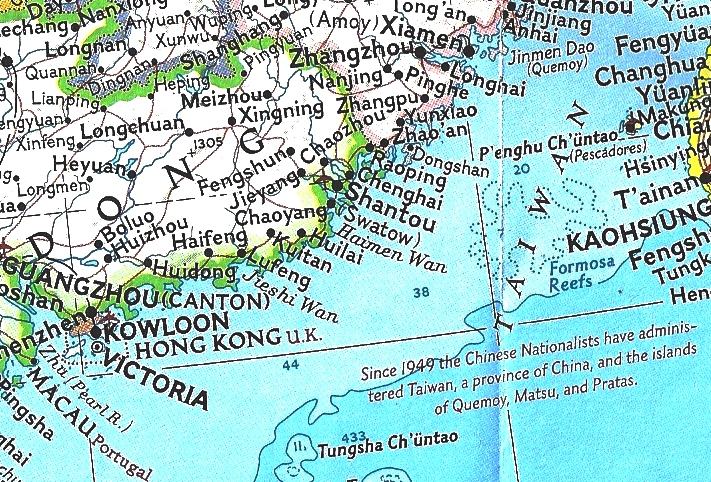 Location of Swatow situated on an inlet of the Formosa (Taiwan) Strait
also showing Amoy (Xiamen), Canton and Hong Kong.
Location of Swatow situated on an inlet of the Formosa (Taiwan) Strait
also showing Amoy (Xiamen), Canton and Hong Kong.
Amphibious Assault on Swatow (Shantou) - 1939
© 2012 Bob Hackett, Sander Kingsepp and Anthony Tully
1127-1279:
During the Southern Song Dynasty, Shantou is a fishing village in Tuojiang City. In the Yuan Dynasty (1271-1368), Shantou is called Xialing.
1563:
Shantou is a part of Chenghai District in Chao Prefecture (Chaozhou). In 1574, Shantou is called Shashan Ping. In the 17th century, the name is shortened to "Shantou".
1919:
Shantou becomes a city. In 1921, it is separated from Chenghai. In 1922, a great typhoon kills 50,000 of 65,000 people in Swatow.
1930s:
Shantou's port ranks third of all Chinese ports in cargo throughput.
1932:
Political unrest in China calls for constant vigilance by the United States Asiatic Fleet (USAF) to protect American lives and property. USAF destroyers and gunboats TULSA (PG-21) and SACRAMENTO (PG-19) are assigned to Swatow and the south China seaports of Foochow and Amoy.
12 August 1937:
South China. 12,000 Japanese residents are under the protection of Rear Admiral (later Vice Admiral) Okuma Masakichi's (37)(former CO of YAMASHIRO) DesRon 5. IJN DesDiv 13 is responsible for Swatow. After the clash in Shanghai, Japanese residents start evacuatiing Swatow as ordered by the Foreign Minister. All safely reach Formosa.
May- June 1939:
Canton-based light bombers of the 3rd Combined Air Unit and floatplanes from tender IJN KAMIKAWA MARU commence regular attacks in the Swatow area. Once a city of 178,000, by the end of June '39, all its municipal buildings are destroyed, electricity cut off and the waterworks are out of order. Nevertheless, American, British, French and Scandinavian ships come into to the port bringing war materials. From Swatow, they are taken overland in trucks to Shiuchow, 240 miles away, Generalissimo Chiang Kai-shek's Southeastern Army's headquarters.
21 June 1939: "Operation "J":
Vice Admiral Kondo Nobutake's (35)(former CO of KONGO) 5th Fleet invasion force of an unknown number of unidentified transports escorted by DesRon 5's DesDiv 45's ASAKAZE and MATSUKAZE. MinesweepDivs 12 and 21 close on Swatow. Japanese forces include No. 9 Sasebo Special Naval Landing Force (SNLF) and IJA MajGen Goto Juro’s detachment of the 104th Infantry Division's 132nd Infantry Brigade consisting of the 137th and 161st Infantry regiments. Other IJA units include the 70th Independent Infantry Battalion, two mountain gun batteries, two engineer companies, a tankette platoon and a river crossing materials company.
Seaplane carrier IJN CHIYODA, the IJN's 3rd Combined Air Unit and Canton Air Unit provide air cover.
The Swatow Operation is part of a campaign to blockade China to prevent it from importing needed arms and materials. Japanese control of Swatow will provide a base to make the blockade of Guangdong province more effective.
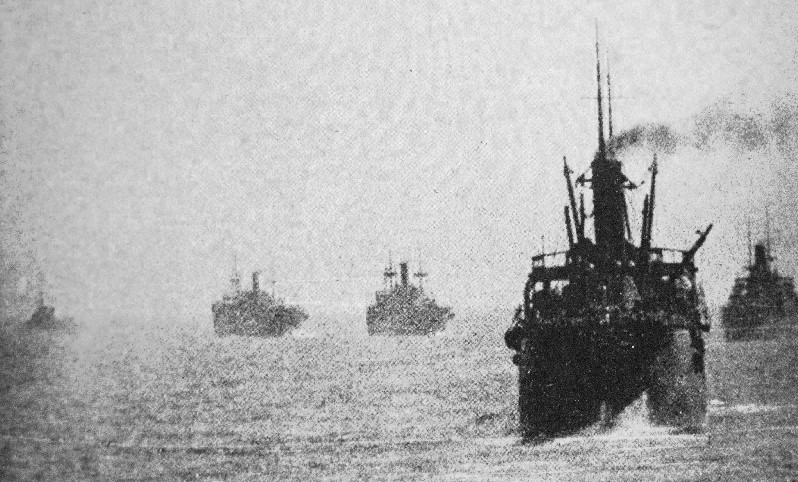 (Japanese invasion fleet heading to Swatow)
(Japanese invasion fleet heading to Swatow)
E of Swatow. After a brief shelling, part of the Goto Detachment and part of the No. 9 Sasebo SNLF land on the coast near the airfield. Other Japanese troops move up the Han river in 10 or more motor boats. The Japanese land at Mei-hsi and cut the road between Swatow north to Chao-chow (now Chouzou). In twelve hours , a coordinated attack drives Chinese forces from Swatow and the city is occupied.
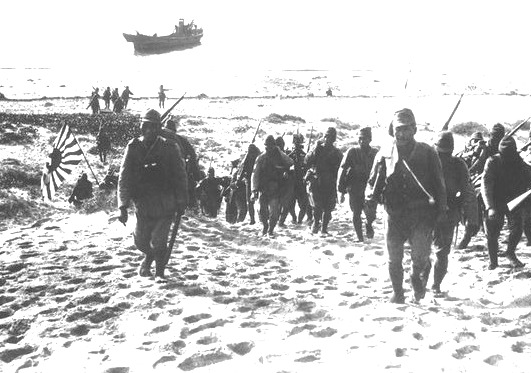 (Japanese troops coming ashore at an unidentified beach near Swatow)
(Japanese troops coming ashore at an unidentified beach near Swatow)
USS PILLSBURY (DD-227) and British destroyer HMS THANET lay in the harbor. Forty American citizens, mostly missionaries, and 80 British nationals are ashore. During the occupation of the city, Japanese naval authorities peremptorily demand that American and British warships leave the area.
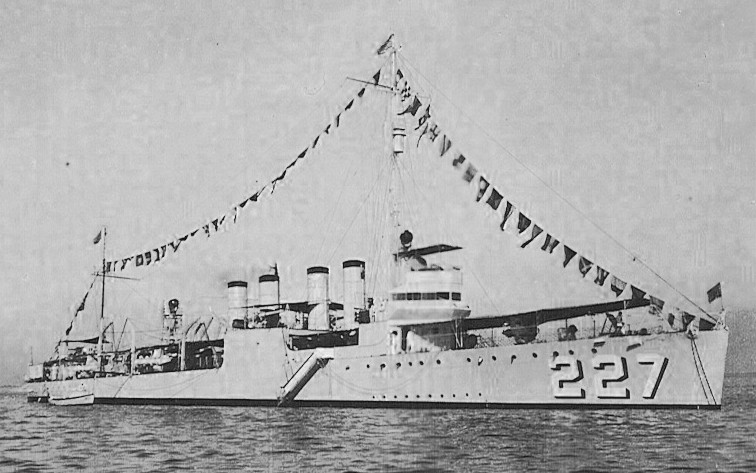
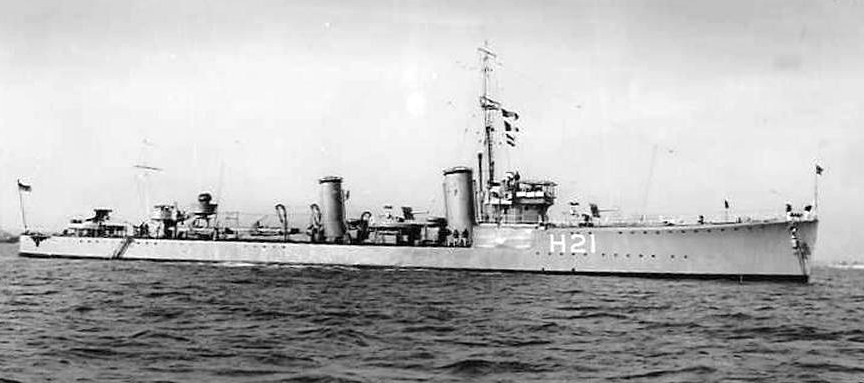 USS PILLSBURY and HMS THANET
Chinwangtao (1, 500 miles N of Swatow). Aboard his anchored flagship AUGUSTA (CA-31), Admiral Harry E. Yarnell, CinC, United States Asiatic Fleet, receives the Japanese ultimatum. For months, the Japanese have blamed any international scrape in China on the military people on the spot. The United States adopts the stalemate expedient of letting its military people on the spot take independent counteraction.
Given a free hand, Admiral Yarnell orders PILLSBURY to remain on station and dispatches destroyer USS POPE (DD-225) to Swatow to reinforce her. The British also keep HMS THANET at Swatow and send HMS SCOUT to join her. Admiral Yarnell further notifies Japanese authorities at Shanghai and the CinC, China Fleet, Vice-Admiral (later Admiral) Oikawa Koshiro (31)(former CO of TAMA) that United States ships will go wherever American lives or property are endangered. Nothing happens to the ships, nor to any American or British nationals ashore at Swatow.
USS PILLSBURY and HMS THANET
Chinwangtao (1, 500 miles N of Swatow). Aboard his anchored flagship AUGUSTA (CA-31), Admiral Harry E. Yarnell, CinC, United States Asiatic Fleet, receives the Japanese ultimatum. For months, the Japanese have blamed any international scrape in China on the military people on the spot. The United States adopts the stalemate expedient of letting its military people on the spot take independent counteraction.
Given a free hand, Admiral Yarnell orders PILLSBURY to remain on station and dispatches destroyer USS POPE (DD-225) to Swatow to reinforce her. The British also keep HMS THANET at Swatow and send HMS SCOUT to join her. Admiral Yarnell further notifies Japanese authorities at Shanghai and the CinC, China Fleet, Vice-Admiral (later Admiral) Oikawa Koshiro (31)(former CO of TAMA) that United States ships will go wherever American lives or property are endangered. Nothing happens to the ships, nor to any American or British nationals ashore at Swatow.
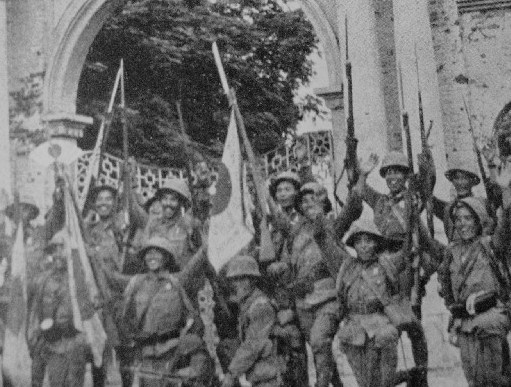 (Japanese troops capture Swatow)
Tokyo. Four prominent Japanese petition Emperor Hirohito (Showa) to "declare belligerent rights" in the "China incident"—that is, to declare war on China. Such a declaration will give Japan the right to blockade the Chinese coast, but it would also certainly force President Roosevelt, according to existing United States neutrality legislation, to declare an embargo on munitions going to Japan. Hirohito ignotes the petition.
7 August 1939:
(Japanese troops capture Swatow)
Tokyo. Four prominent Japanese petition Emperor Hirohito (Showa) to "declare belligerent rights" in the "China incident"—that is, to declare war on China. Such a declaration will give Japan the right to blockade the Chinese coast, but it would also certainly force President Roosevelt, according to existing United States neutrality legislation, to declare an embargo on munitions going to Japan. Hirohito ignotes the petition.
7 August 1939:
Swatow. Destroyer HMS TENEDOS puts a Royal Navy and Marine landing party ashore to protect British subjects during Chinese rioting. The action brings strong protests from the Japanese.
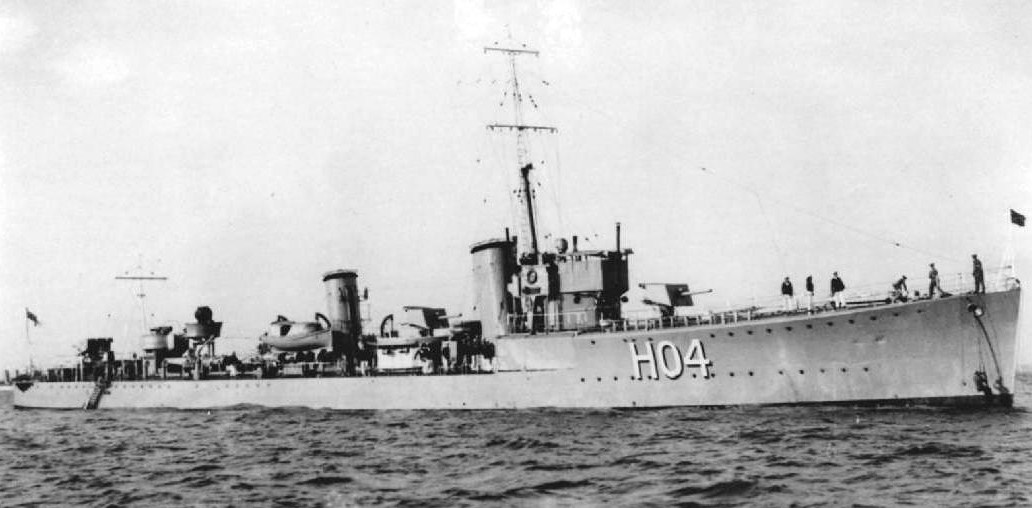 (HMS TENEDOS)
(HMS TENEDOS)
-Bob Hackett, Sander Kingsepp and Anthony Tully
Back to Rising
Storm Page











